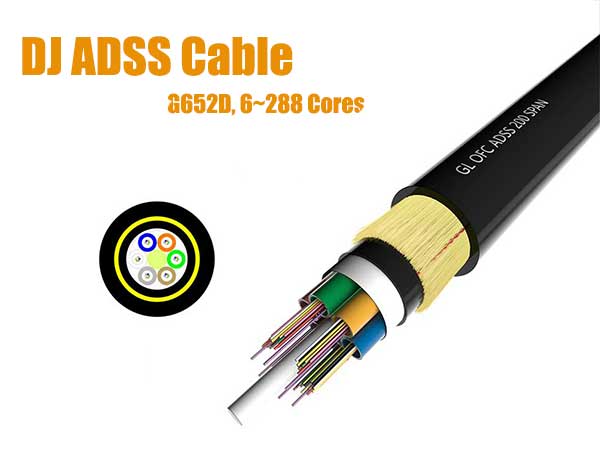Due to the advantages of high strength, good tensile strength, no need for grounding, and convenient construction, ADSS fiber cables are widely used in communications, broadcasting, television, railways and other fields.

The design and selection of ADSS fiber cables need to consider the following factors:
1. The environment where the optical cable is located
The environment where
ADSS fiber cables are installed is usually at high altitudes and is affected by weather conditions such as wind, rain, and snow. Therefore, it is necessary to fully consider the tensile strength, wind load resistance, waterproof performance, and antioxidant performance of the optical cable.
2. Required transmission distance and bandwidth
When selecting ADSS fiber cables, it is necessary to fully consider the required transmission distance and bandwidth. According to the requirements of transmission distance and bandwidth, appropriate optical cable specifications and optical fiber types can be selected.
3. Required installation method
There are two main installation methods for ADSS fiber cables: hanging wires and hanging points. When selecting ADSS fiber cables, it is necessary to select a suitable installation method according to the actual situation and consider factors such as the required tensile strength and corrosion resistance.
4. Cost and reliability
When designing and selecting ADSS fiber cables, cost and reliability must be fully considered. You can choose the most cost-effective product by comparing the price and quality of fiber cables and optical fibers of different brands, as well as considering the costs of maintenance and operation.

Taking the above factors into consideration, you can come up with ADSS optical cable products and installation solutions suitable for your application scenarios. In actual operation, you must also pay attention to the installation and maintenance of ADSS fiber cables. The installation of fiber cables should be carried out in accordance with relevant standards, and the maintenance of fiber cables should be carried out regularly to ensure the reliability and safety of fiber cables.
In short, the design and selection of ADSS cables need to comprehensively consider various factors to select the products and installation solutions that best suit your application scenarios. During use, you must also pay attention to the installation and maintenance of fiber cables to ensure the reliability and safety of fiber cables.
In actual operation, you must first determine the installation location and installation method of
ADSS cables, including two methods: hanging wire and hanging point. Among them, the hanging wire method is suitable for fiber cables spanning longer distances, while the hanging point method is suitable for situations where other equipment needs to be installed on the optical cable. After determining the installation method, the strength and wind load resistance of the optical cable also need to be considered to ensure the stability and safety of the optical cable.
In addition, the maintenance of the optical cable is also very important. The maintenance of the optical cable includes regular inspection and cleaning of the optical cable, monitoring of the environment around the optical cable, and timely handling of optical cable faults. In addition, the optical cable needs to be protected to avoid damage to the
optical cable due to external reasons, which affects the communication quality.
In short, ADSS cable is a high-strength and high-reliability optical cable. When used in occasions such as high-altitude power transmission lines, it can provide good communication effects and stability. When designing and selecting ADSS fiber cables, factors such as the environment in which the optical cable is located, the required transmission distance and bandwidth, the installation method, cost and reliability need to be considered. In actual operation, attention should also be paid to the installation and maintenance of the optical cable to ensure the reliability and safety of the optical cable.


